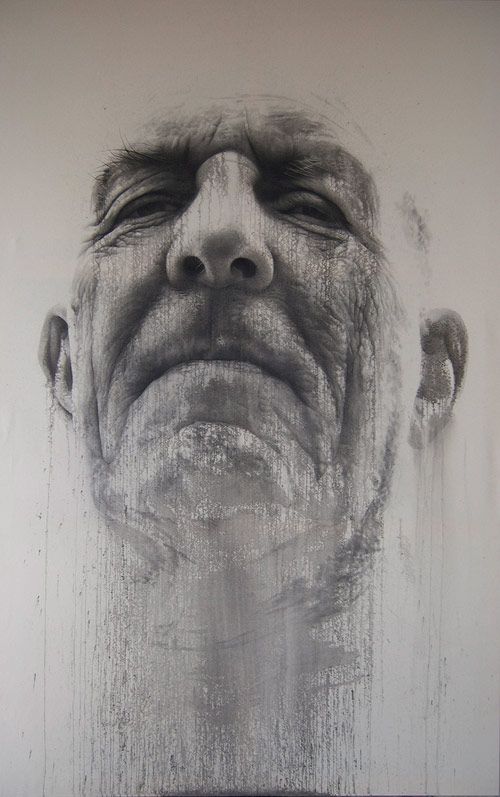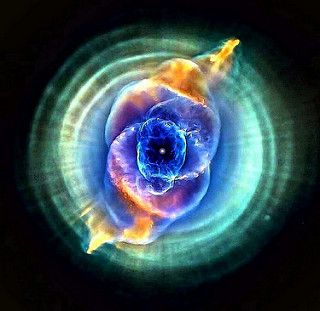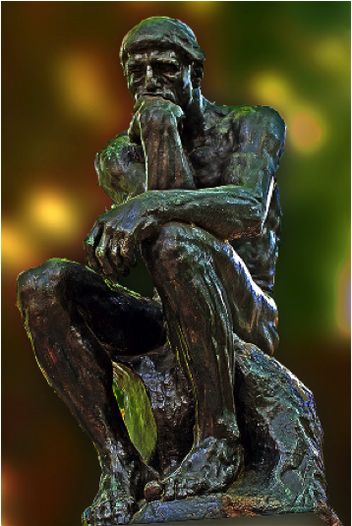To design is to envision an outcome and then purposely determine how to rearrange matter to achieve that outcome. The context might be physical, resulting in a tool or a machine, or metaphysical – symbols or imagery conveying meaning, or a combination of the two. Design is ultimately produced only by intelligence; unconscious matter cannot envision, purpose or determine.
 Complexity is a measure of difficulty in design; more complex designs require more intelligence. When we encounter highly complex, inanimate designs we immediately recognize them, and we naturally ascribe the intelligent cause to humans; proposing any other cause is irrational.
Complexity is a measure of difficulty in design; more complex designs require more intelligence. When we encounter highly complex, inanimate designs we immediately recognize them, and we naturally ascribe the intelligent cause to humans; proposing any other cause is irrational.
Yet living creatures also have the appearance of profoundly complex and exquisite design, far beyond human capability, so it’s natural to infer the existence of a supreme Mind, a God, the Designer of the human mind, and to be inspired unto worship. (Ps 139:14)
But when we’re predisposed to rule out the possibility of a transcendent, intelligent Cause a priori, we invariably struggle with the apparent design of living creatures, desperately looking for a natural cause rather than a divine one.
Enter Charles Darwin, a mid-19th century biologist offering an explanation (Evolution) for how unintelligent processes might account for the appearance of design in Nature: organisms change (evolve) over time due to slight, random changes in offspring (Common Descent), some of which improve chances of survival; in competing for scarce resources, random (unintelligent) processes tend to eliminate inferior organisms (Natural Selection), favoring those more suitably adapted to their environment. Given sufficient time, Darwin supposed such processes might plausibly account for design throughout Nature.
Yet Darwin and his contemporaries were unable to explain how Evolution works at the required level of detail; they were clueless about the complex biological machinery of life because the tools enabling this level of research were unavailable until the late 20th and early 21st centuries.
Now, we understand the molecular mechanism which drives Evolution: random anomalies (mutations) may occur during DNA replication which alter the structure of proteins, the building blocks of living cells; some of these changes are beneficial, helping offspring survive.
 This explains, for example, the wide variety of Galapagos finches or African cichlids; Evolution nicely accounts for variations within a kind of organism (generally within the same family classification, micro-evolution), but it has not yet explained how the various kinds of organisms (family and above, macro-evolution) came to exist in the first place. Why not?
This explains, for example, the wide variety of Galapagos finches or African cichlids; Evolution nicely accounts for variations within a kind of organism (generally within the same family classification, micro-evolution), but it has not yet explained how the various kinds of organisms (family and above, macro-evolution) came to exist in the first place. Why not?
Differences between families of organisms, say between a finch and a swan, or between a cichlid and a shark, lie at the molecular level, in the myriad array of biological machines which make up living cells. Many of these machines are irreducibly complex: disabling any one of the component parts breaks the machine; such machines cannot be formed gradually, in a step-wise manner, continuously improving or altering their function: it’s all or nothing.
Consequently, after decades of intense research, scientists hoping to find a naturalistic explanation for the apparent design of living systems find themselves at an impasse: mutations in DNA replication cannot reasonably account for the large differences between diverse kinds of biological machines. It’s like proposing that blueprints (DNA) for sewing machines came from haphazard copying errors (mutations) to blueprints for washing machines, one step at a time, such that each intermediate machine (none of which were ever actually observed) worked as well as or better than the prior one. It’s unthinkable, patently absurd.
It should come as no surprise then to find that, to date (early 2020), no scientific publication of any kind explains exactly how random rearrangements of DNA could reasonably account for the design of any irreducibly complex molecular machine in any living organism, not even the simplest of these machines. The reason is obvious: each one comprises many very complex proteins arranged in very specific ways to achieve very complex functions, much more complex than a sewing machine.
The chances of randomly forming a typical, useful protein molecule from scratch, even if all (20 or so) required types of components are present, compares to blindly selecting a particular atom from among all the atoms in the Milky Way galaxy.
Even if we start with a similar but fundamentally different kind of supposed parent machine, the time required to randomly generate just a handful of the numerous mutations needed to form the specific proteins required by any one of these complex biological machines would be astronomical. In other words, even the simplest of the biological systems is so extremely complex that it is inconceivable for even one of them to come into existence via Evolution.
This scientific impasse is not based on an absence of knowledge (God of the gaps), but on overwhelming biochemical evidence that is only becoming increasingly problematic for Evolution as we learn more about how living organisms work. No reasonable alternative theories have been proposed which explain the scientific data, and given the overwhelming nature of the evidence, we have no reason to ever expect a naturalistic explanation.
The only rational conclusion we can now derive from science is that every living thing is designed by a very powerful Mind. The entire body of scientific knowledge in biochemistry points to this conclusion; there is zero evidence for macro-evolution.
Divine design is now more evident in living things than is human design in inanimate things, which we readily accept where we’re free from crippling bias. Design is clearly seen everywhere, being understood by us all, whether we happen to like it or not. (Ro 1:20)
articles ♦ posts
 When we read our Bibles in this state, or participate in spiritual discussions, we aren’t really listening with an intent to learn; we’re waiting for an opportunity to reinforce or show off what we think we already know. We ignore and dismiss ideas which might contradict our current view; we want to be perceived to be right, rather than actually being right. We become dull of hearing, unteachable. (He 5:11)
When we read our Bibles in this state, or participate in spiritual discussions, we aren’t really listening with an intent to learn; we’re waiting for an opportunity to reinforce or show off what we think we already know. We ignore and dismiss ideas which might contradict our current view; we want to be perceived to be right, rather than actually being right. We become dull of hearing, unteachable. (He 5:11)








